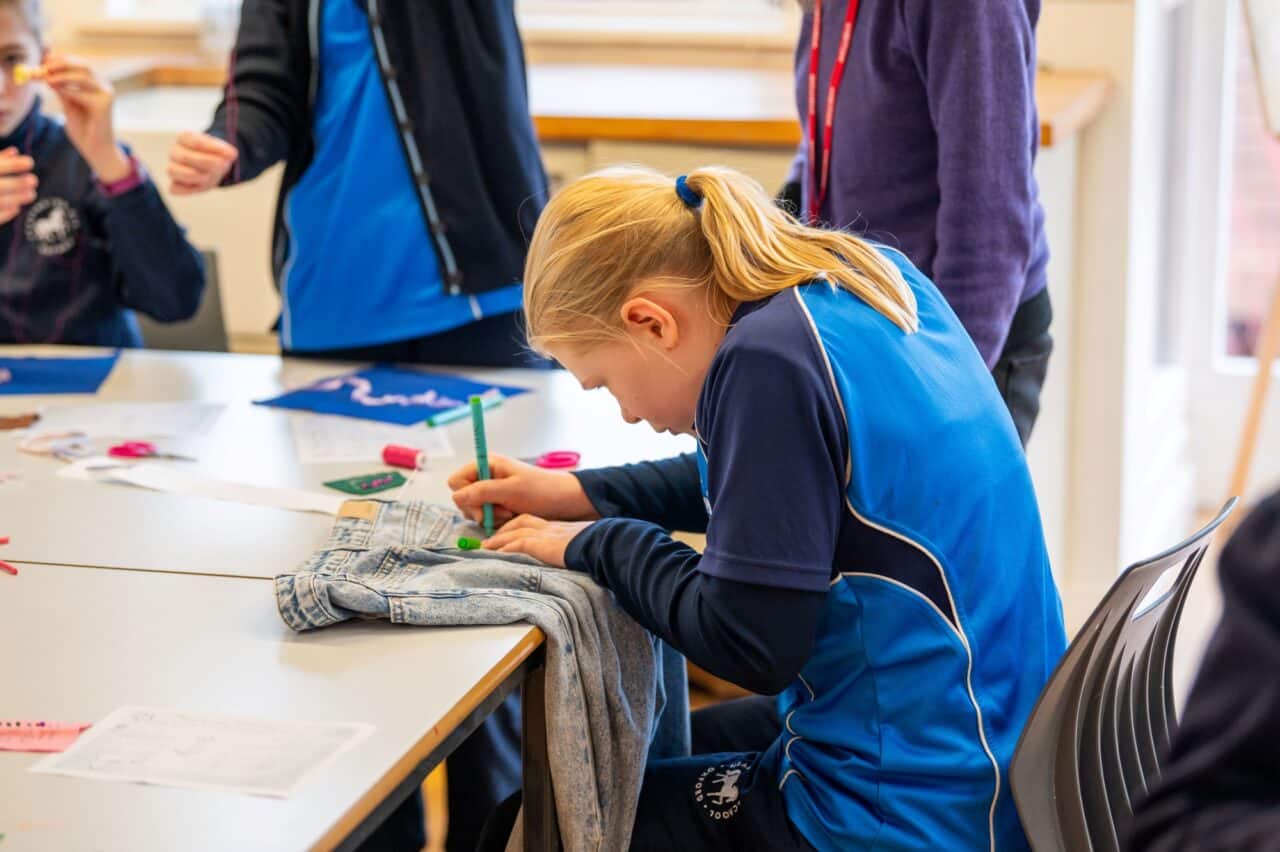Why collaborative learning benefits us all
I love coming to work. Not many people can say that. Don’t get me wrong, I love spending time with my family, I love the holidays and I hanker after that Friday feeling like everybody else. But what I realised a long time ago is that the people you work with are just as important as the tasks you complete on any given day. And I work with some truly wonderful people. Headington is a busy place to work, whether you are lucky enough to be a pupil or a teacher or any one of the incredible support staff who keep this place running at top speed, but what makes it so special is the sense of community which is underpinned by the pride and purpose we all share. This isn’t just my rose-tinted impression or a marketing message. It was corroborated and celebrated in the recent ISI inspection report.
Indeed, one of the proudest moments in my career so far was reading the inspectors’ praise of the ‘collective display of collaborative learning, peer teaching and mutual support’ here at Headington. They found endless examples of collaborative learning, but a particular highlight was the U5 (Year 11), who had occupied the Lea Library – a space we affectionately call the Middle School Hub – in order to support each other’s revision for their mock exams, which they were midway through at the time. The pupils had chosen to be in school, rather than at home on their own, during the study leave period. They had organised themselves into subject-based study groups without the aid or direction of any teachers and they worked consistently and supportively, manufacturing mind-maps, ploughing through practice papers and reciting mnemonics and formulae from first thing in the morning until the days’ end.
Headington pupils are well-versed in the very many benefits of collaborative learning. They are taught about the importance of thinking critically, which almost always involves sharing ideas, exploring different interpretations, questioning, dissecting and deconstructing, through paired, group or whole class discussion. They are very used to testing and teaching one another as a means of developing their own skills and knowledge; they are masters at peer marking and providing formative feedback by the time they reach Middle School. I would go as far as to say that some of our L4 (Year 8) pupils could give any CEO a run for their money in developing talent through constructive criticism. They understand that honest appraisal and clear advice are necessary to improve; they value the time and attention that their teachers and classmates give to assessing them, because they see this as a way of showing that we care.
It is this direct correlation between collaboration and compassion that makes me so proud of the learning culture that we have instilled throughout the School. Not just because it’s another one of our treasured six Cs but because empathy and the ability to work with others frequently top the business and industry leaders’ desirable skills charts, alongside the ability to respond to feedback and a willingness to adapt and learn. Another highlight of the ISI report was the inspectors’ mention of the way that our pupils, when asked to get into groups, automatically made sure that no one was left out – apparently this is not the norm elsewhere. Group work is a familiar part of almost every lesson here at Headington, just as teamwork is a familiar part of most professional lives. The pupils know the importance of learning to communicate effectively with others, listening to each other and respecting each other’s views, because they know that success is rarely a solitary venture. They also know that these skills will make them better leaders in the working world.
Collaboration is happening everywhere and all of the time, before, during and after the school day. Beyond the classrooms and communal study spaces, one only has to take a wander through the school grounds to see that Headington’s fabulous facilities provide the perfect environment for a collaborative culture to grow. From the all-weather pitches to the Theatre, the science labs to the Hive, every location is open and welcoming, every subject-area celebrates the successes of individual pupils’ work, and every department encourages healthy ambition alongside meaningful personal and peer-to-peer reflection. The rich and varied list of co-curricular activities that foster team-building and the necessary reliance on others for group achievement extends and permeates beyond areas where you would expect to see it, such as team sports, Duke of Edinburgh, CCF and debating, to things like the Green Power racing car project, Model United Nations and Maths Challenges. Even the year group inter-form competitions and much-loved house events which punctuate the school year provide the continuous reminder that we are all in this together, prompting the continuous drive for collaborative success on a whole school community level. The wide-ranging charitable endeavours, which this term include gardening at the Warneford Hospital, are always well-attended and exemplify the ‘informal, unspoken responsibility’ (another quote from the ISI report) that Headington pupils demonstrate as members of our school community.
There is an awareness amongst the pupils that their learning journey is their own, they are in control and can determine their own outcomes with their attitude and personal drive, but it is also a shared experience in which they can learn from one another – and this process is likely to be enjoyable and enriching. In the act of collaboration, they are taking responsibility for their own learning and others’ by becoming active and involved participants in all aspects of school life. No-one at Headington expects to be ‘spoon-fed’ and no one is sitting through lecture-style lessons or being instructed to simply absorb information in order to regurgitate it at a given time in the examined future. They know that active learning is creative and the very best method of revision is teaching someone else. They also know how important it is to create a purposeful and positive environment where the discourse around attainment is forward-looking and comparisons are only congratulatory.
And this brings me onto my final point: the collaborative learning culture builds resilience amongst our pupils – or some might say ‘courage’ to try and then try and try again. We talk to the pupils a lot about the necessity and indeed benefits of failure as part of the learning process; we encourage them to talk honestly and optimistically with one another and us about their more and less successful attempts to understand and implement their studies. There are of course times when it is more comforting and even more appropriate to suffer the slings and arrows of test results discreetly and alone but the more open we are about our own set-backs, the more we can celebrate the great many opportunities and accidental triumphs that arise from these inevitable, daily events. If you will allow me one more inspection quote: Headington pupils are ‘always prepared to have a go; they are used to failing and know how to learn from failure’.
As I type this, I can see the fifth form study period underway outside my office door. There is a flurry of History revision cards being hastily created and the sound of a French oral being recited by the photocopier. One of our dedicated Sixth Form mentors is with her charge in Chemistry and a queue has formed outside the Assistant Head’s door of those seeking some clarification on a particularly tricky question on the recent Maths test. The teacher in question will no doubt power down the emails shortly in order to tutor the group as a whole before we all make our way to a swift but hearty lunch. It’s a genuine privilege and pleasure to be here, to be part of this special place, everyday. Working together, even when we are all working hard, feels good because we are helping each other and we know that others care about us and our successes, whatever form these take.



